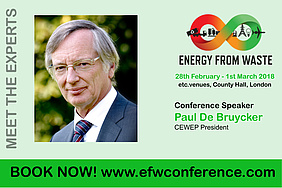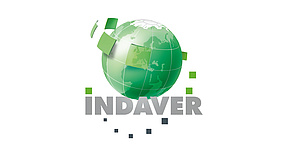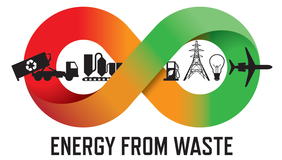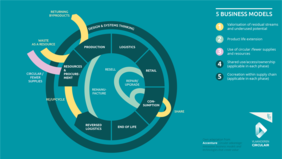Waste-to-Energy facilities: the protectors and suppliers of the circular economy
Networking and Generating Ideas
The Energy from Waste Conference, which will be held in London this year from the 28th of February to the 1st of March, is an annual highlight for the owners, operators and suppliers of Waste-to Energy plants in the UK and Europe. They come together to discuss the key issues for the sector, to exchange best practices, to discover new technologies, to network and to listen to international speakers.
CEWEP: Giving Waste-to-Energy an extra boost
One of these speakers is the CEO of Indaver nv, Paul De Bruycker. Since September 2017, he has been the new chairperson of CEWEP, the Confederation of European Waste-to-Energy Plants, the umbrella association for owners and operators of Waste-to-Energy facilities in Europe. CEWEP has 34 European members, who together represent 389 Waste-to-Energy facilities, i.e. around 80% of Europe's Waste-to-Energy capacity. It represents the sector at a European level and participates in the decision-making process. Furthermore, it encourages members to share their experience, research and development. CEWEP wants to give the recovery of alternative energy from waste an extra boost and to demonstrate that Waste-to-Energy facilities reduce dependence on landfilling and fossil fuels.
Europe: setting some good examples (and some not so good)
"In general Europe does a good job of promoting the concept of the circular economy", says Paul De Bruycker. "High energy-efficiency, recovery of materials, reducing CO2-emissions and looking for alternatives to landfill." But, he has noticed big differences between European countries. The forerunners are countries such as Belgium, Germany and the Netherlands, whereas Central and Eastern Europe and countries such as the UK are lagging behind with too much waste still going into landfill.
A sustainable alternative to landfilling
Thermal treatment of household waste, with energy recovery is a safe and environmentally-friendly alternative to landfilling. "In a circular economy we try to re-use as many materials as possible from waste. But Waste-to-Energy offers a sustainable solution for waste that can't be recycled into high-grade products, or that contains harmful organic components.
Energy Supplier
"In the circular economy value-creation is key. Waste-to-Energy plants therefore play an important role in protecting the quality of the materials in the loop, but also in supplying energy and materials." The 90 million tons of waste that is currently lying in landfill sites across Europe, could provide 18 million Europeans with energy, and 15 million Europeans with heat via heating networks. Indaver's Waste-to-Energy facilities in Doel and Antwerp for example supply steam and power to businesses and residents; the Hamburg facility supplies energy for district heating. In addition, the incinerator ash can be used by the construction industry as a building material.
"Waste-to-Energy plants must take on this role. Closing the materials loop in a low-carbon and energy-efficient way, is the only way to ensure prosperity and well-being in this world."
Paul De Bruycker, CEO Indaver - President CEWEP
Share this page




